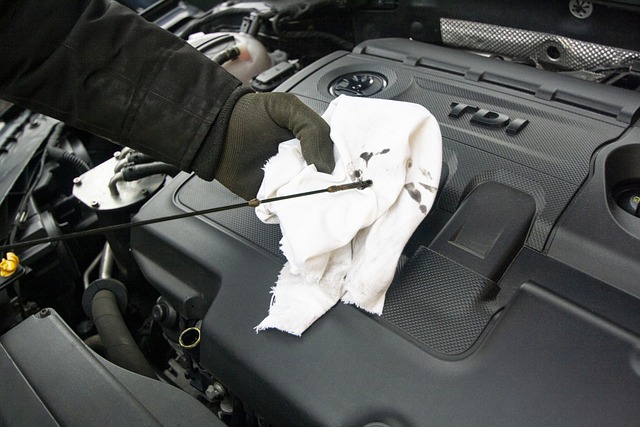Most drivers need to change their oil around every 8,000 to 12,000 km, although the specific timing will vary based on your car, driving habits and oil used. Vehicles with older engines or conventional oil typically require oil changes more frequently, whereas newer vehicles with synthetic oil can extend the period between changes. Most car makers these days now use built-in oil life monitors, which provide reminders based on actual use, not arbitrary time frames. For those who drive in harsh conditions such as stop-and-go traffic or dusty environments, oil might require changing earlier. To assist you in discovering the ideal schedule for your vehicle, the main text will display transparent advice and specifics from specialists and real-life examples.
Key Takeaways
- First, consult your vehicle’s manual for manufacturer-recommended oil change intervals, as this advice is tailored to your specific model and driving conditions. Documenting your oil changes will keep you in compliance and may help preserve your vehicle’s warranty and performance.
- Choosing the right oil type–conventional, synthetic blend, or full synthetic–depends on your driving habits, vehicle compatibility, and innovations in oil technology. Synthetic oils generally provide longer intervals and better engine protection, meaning you’ll actually save money in the long run.
- Adjust your schedule oil change according to your driving habits, engine age, and operating conditions such as frequent short trips, high-speed driving, or extreme temperatures. Older engines, as well as those operating under severe conditions, can often benefit from more frequent oil changes to avoid excessive wear.
- Take advantage of your vehicle’s onboard oil life monitors and diagnostics but don’t rely on them exclusively. Just remember to support the technology with regular manual checks, of the oil level, its color and smell and texture.
- Realize that pushing oil changes can lead to engine wear, fuel economy loss, warranty voiding and repair bills that could give you an aneurysm. Forward-thinking care fuels top-level car health.
- Consider both short and long term savings when scheduling your oil changes, and opt for greener disposal. Commitment to frequent oil changes safeguards your engine, boosts performance, and promotes environmentally-friendly driving.
The New Oil Change Rulebook
No one-size-fits-all rule applies to every car, driver or road. The days of the 3,000-mile oil change are over. New engines, oils and tech have changed things. Auto manufacturers are now recommending oil changes at 8,000–12,000 km, some longer, depending on driving style and conditions. Digital dashboards can extend this to 10,000 miles. Lots of mechanics continue to recommend 8,000–11,000 km, based on how oil quality and driving habits vary. Oil life is dependent on specifics—such as your driving style, climate and your engine’s age.
Your Car’s Manual
Consult your manual for the appropriate oil change interval. Sticking to the carmaker’s plan keeps your car in optimal condition.
Most manuals provide more than one tip. They compensate for heat, dust or congestion. City folk or those in extreme climates may require more frequent changes. Remember oil changes. When you record the date and mileage it helps you adhere to the schedule. They list the oil types your engine requires. Adhering to these specs prevents damage and maintains your warranty.
Your Oil Type
Choose your oil according to your driving habits and conditions.
Synthetic oils not only withstand the test of time longer than their conventional counterparts, but offer superior protection in extreme conditions. Certain blends CAN extend intervals to 15,000 km. Not all cars can run synthetic. Always refer to your manual or consult a trusted mechanic. Newer oils just keep getting better—monitoring the updates allows you to select the best of the best to protect your engine.
Your Driving Style
Short city trips, constant stopping, and heavy loads can decimate oil quickly. If you’re hauling or stuck in daily gridlock or towing equipment, you’ll still need to switch oil more frequently — even if your dash hasn’t blinked.
Aggressive starts, hard stops or extreme weather can reduce oil life. In warm or cold locations, or in dusty cities, the oil degrades sooner. Long highway trips are less brutal, so you may be able to wait longer between changes.
Your Engine’s Age
Older engines burn or leak more oil.
Wear inside the engine translates to topping up or changing oil more frequently. Check oil frequently, and calibrate your intervals as your car ages. A good mechanic can assist with dialling your schedule in.
Talk to a mechanic.
Your Car’s Tech
Many new cars have sensors to track oil life.
Intelligent systems adapt change intervals to your driving habits. Update your car software for the most accurate alerts. Look over your dash for oil warnings.
What Happens If You Wait?
What happens to my engine if I delay oil changes — how it impacts the engine’s health, fuel efficiency, warranty status, and reliability. Our modern engines require clean oil to perform well, and the consequences of waiting too long can cause real issues that aren’t always easy or inexpensive to repair.
Engine Wear
Aged oil degrades in viscosity, so it doesn’t flow properly and can’t coat engine components as necessary. The consequence is increased friction among moving components, accelerating wear and potentially causing metal-to-metal contact. This translates into an engine that’s running hotter and prone to early breakdown.
If oil isn’t changed on schedule, sludge accumulates inside the engine. This viscous sludge clogs tiny oil passages and coats critical components, like the camshaft and crankshaft. Over time, sludge can block oil flow, starving the engine of lubrication and cooling. This is far more common in cars that make a lot of short trips or are used in hard city traffic, where oil deteriorates quicker. Some engines, when neglected, will begin burning oil at an accelerated rate, at times going through a quart every 1,000km.
Too much wear often results in things like piston replacement, gasket changes or even a rebuild. These repairs can be thousands of dollars, way more than just getting your oil changed routinely. Routine checkups minimize the probability of this type of calamity.
Fuel Economy
Dirty oil causes friction, which forces your engine to work harder, and consume more fuel. This translates into a car that previously felt ‘peppy’ beginning to make extra pit-stops to the pump, and the owner confronting elevated operating expenses.
Clean oil keeps the engine running smoothly and at optimum efficiency. Fresh oil means internal components slide freely, which maintains consistent fuel consumption and keeps the engine cool. If you see a decrease in km/L, it could be a sign that you need an oil check.
Keeping up oil changes helps the car hold its value longer. A well-serviced engine is a selling feature for any purchaser.
Warranty Issues
Skipping oil changes can even void your car warranty. Most warranties need you to demonstrate that you maintained the recommended maintenance schedule. If you can’t prove that, you risk having to cover all repair expenses yourself.
ALWAYS use the oil type and grade recommended in your owner’s manual. Using incorrect oil can void warranty coverage. Verify your warranty papers for any special instructions.
Monitor for Engine Trouble
Watch for warning signs such as noise, heat or oil lights.
Check oil levels and look for leaks often.
Don’t disregard burning smells from the engine or smoke from the exhaust.
A year without an oil change is too long.
Decoding Different Oil Types
Engine oil is not universal. Every oil type, whether it’s conventional, a synthetic blend, or full synthetic, provides different advantages and change intervals. There’s no one-size-fits-all answer — depending on your oil’s viscosity, your driving habits and the age of your vehicle, you may need a different type of oil and different oil change frequency.
Conventional
Standard oil is generally the least expensive. It fits older cars with no high performance requirements. It breaks down sooner, so plan to swap it every 5,000 to 8,000 km. In hot or cold climates, or when towing, traditional oil won’t protect as well as synthetics.
It’s easy for oil levels to get out of control with conventional oil. It breaks down more quickly when you’re dealing with stop-and-go city driving or multiple short hops. If you’re a driver with fairly minimal commute requirements and an older vehicle, then conventional oil remains a very down-to-earth option — just make sure to keep it checked and changed regularly. High-mileage oil, which is a sub-type of conventional, is perfect for cars with over 120,000 km. Its additives assist in sealing leaks and extending the life of your engine.
Synthetic Blend
Synthetic blend is a combination of conventional and synthetic oils. It lasts much longer than traditional alternatives, typically as far as 8,000 – 12,000 kilometres before a change. Most motorists consider it the sweet spot—more protection than conventional, but not as expensive as full synthetic.
Synthetic blends resist breakdown and sludge buildup, so engines stay cleaner and run better. They work well for mixed commuters—part city, part highway. Price-wise, they walk the middle ground, and hence are a favorite among those with moderate climates and average driving styles.
Full Synthetic
They use advanced full synthetic oil formulas for the ultimate in protection. They offer the longest oil change intervals, sometimes 15,000 km or more, and hold viscosity in both hot and cold extremes. This renders them perfect for newer, high-performance engines and for drivers who prefer less oil changes.
Although synthetic oil is pricier, its longevity saves you money in the long run. It shields engines against wear, even during stress, like high speeds or heavy loads. For extreme conditions, or if you’re just looking out for your baby, full synthetic is king.
Key Considerations
Oil thickness, like 5W-30, affects performance in varying temperatures.
Follow your vehicle’s manual for the recommended oil type.
Your driving habits—multiple short trips or heavy loads—could require changing more often.
Other vehicles require oil changes as often as every 1,600 kilometres. Others can be 16,000.
Beyond The Dipstick
Oil maintenance—always staying one step ahead of it—is about a lot more than simply changing it on schedule. Routine inspections catch problems before they get away. Oil serves as both a lubricant and a cooling agent, keeping engine parts running smooth where coolant can’t reach. While most specialists recommend oil changes every 8,000–12,000 km, the ideal interval varies based on oil grade, your vehicle’s requirements and your driving habits. If you’re running synthetic or do mostly highway driving, you can likely push longer, perhaps as high as 16,000 km. If you drive in busy cities, in harsh climates, or take short trips, you might need to change oil more.
Check The Color
New motor oil appears transparent and golden. Once it begins turning dark brown or black, it’s got dirt and lost some of its strength. If you notice milky or frothy oil on the dipstick, that’s a red flag—coolant could be seeping in, requiring immediate attention from a mechanic.
Color is an easy initial hint. Maintain a mini color chart in your glove compartment. Just match the oil on your dipstick against the chart every few weeks or before long trips! It’s a habit that helps you catch issues before they spiral.
Check The Smell
A burnt smell from the oil is an obvious indicator that it’s not protecting your engine anymore and has to go. Other times, it can smell sour or funny, indicating it’s been contaminated.
Smell checks provide one more dimension beyond merely glancing at the oil. If you see it change, test the oil’s color and texture as well. Sniffing oil every time you check it gets you in the habit of catching trouble early, particularly if you drive in demanding conditions.
Check The Feel
When you rub oil between your fingers it should be slick and smooth. Grit or granules translate to dirt or sludge, which can be damaging to your engine.
If it’s thin like water or thick like syrup, that’s another indicator it’s time for a switch. Dip your finger in the oil with every routine check—this step, while basic, completes your examination.
Oil Inspection Checklist
Look at the oil’s color.
Smell for burnt or sour notes.
Feel for grit or odd thickness.
Check often, not just before trips.

The Real Cost of an Oil Change
Oil changes are not simply an item on your budget, they impact your car’s performance, lifespan, and even the environment. The real cost isn’t merely what you shell out at the shop, but what you conserve, what you gamble, and how your decisions resonate in the long-run.
Upfront Price
$20-$100, depending on oil type & provider. Local mechanics and big chains typically provide basic service at the low end. Premium brands and dealers and synthetics charge more, usually for higher labor or regional rates.
When scheduling, consider the cost of oil and the filter. Conventional is least expensive, but requires changing every 8,000 km. Synthetic blends fall somewhere in the middle for both cost and change intervals. Full synthetics are more expensive (sometimes twice as much), but can last as long as 16,000-24,000 km. DIY oil changes, though around $40 on average, require that you handle and dispose of used oil safely. Always see if they have package deals or seasonal deals, as those will save you money over a year. Opting for quality oil from the beginning can reduce future maintenance by keeping engine components cleaner, minimizing wear, and fooling you into longer change intervals.
Long-Term Savings
Regular oil changes prevent engine wear, avoiding breakdowns that can cost thousands. Clean oil increases fuel efficiency, which means you’re saving on gas, too.
Sum up maintenance, not just repairs. A few planned oil changes a year is considerably cheaper than a new engine or overhaul. Making oil changes the foundation of vehicle maintenance goes a long way toward getting the most possible life out of your car and keeping its value intact if you ever decide to sell or trade it in.
Environmental Impact
Used oil can contaminate water and soil if discarded haphazardly. ALWAYS recycle old oil at authorized collection sites or take it to recycling shops.
A few oil changes use green means — recycling oil and filters or providing longer-lasting synthetic choices. Synthetic oils, with their longer change intervals, reduce oil waste as well. By supporting recycling programs, you’ll help keep used oil out of landfills and waterways.
Weighing Maintenance vs. Neglect
Neglecting oil changes can mean big repair bills.
Skipping routine service puts your car at risk.
A healthy oil change routine pays off.
The small upfront cost protects a much bigger investment.
When Technology Gets It Wrong
Oil life monitors in vehicles have altered the way we monitor oil changes. These systems utilize sensors and algorithms to estimate oil quality based on driving behavior, mileage, and duration. These instruments aren’t flawless. Sometimes, they overlook things. For instance, they may fail to detect if you make short drives in cold weather, which prevents the engine from fully warming. This can allow water to accumulate in the oil, damaging the engine. Tech can miss too when dust or intense heat causes oil to wear out quicker. So, you’re smart to be vigilant. See the dipstick, check the oil’s color and level. If it feels thick, dark, or gritty, then it’s time, regardless of what the dashboard says.
The former standard advised oil changes every 3,000 miles. This counsel is frequently too conservative for new vehicles and oils. Now, newer cars, with better engines and synthetic oils can go much longer—8,000, 12,000 or even 24,000 kilometers (5,000 to 15,000 miles) between changes. If you heed the ancient advice, you might blunder and waste time and money. For instance, changing to a more extended interval could conserve $240+ over 2 years. Yet, that doesn’t jibe with everyone. If you drive in stop and go traffic, tow heavy loads or travel dusty roadways then you may need to change oil more frequently. Certain driving habits, such as excessive short trips, cause oil to degrade more rapidly.
For optimal care, don’t let tech supplant checkups. Definitely read your owner’s manual or look your specific car model up online for the proper interval. Manual checking and periodic visual inspections keep you ahead of issues the system could overlook. This combination of tech and personal care is the winning formula for your car’s engine health, your wallet, and for all things not wasted.
Conclusion
To keep your car running smooth, follow the oil change schedule personalized for your car, your driving habits, and your oil. Newer cars may last longer before they require fresh oil, but do not omit checks. Skipping can result in expensive repair bills and a shortened engine life. Not sure? Your owner’s manual provides specific indicators and actions. New sensors and dashboards assist but still don’t always nail it. Go to a reliable shop or DIY if you know the routine. For peace of mind, maintain a basic record. Post your advice or anecdotes below, and assist others determine the optimal method to make their motors roar.
Frequently Asked Questions
1. How often should you change your car’s oil?
Today’s cars require an oil change every 8,000 to 12,000 kilometers, or according to your owner’s manual. Always consult your car’s own recommendations for prime results!
2. What happens if you delay an oil change?
Putting off oil changes can lead to engine wear, decreased performance, and even catastrophic engine damage. Regular oil changes keep your engine purrin’.
3. Does the type of oil matter for oil changes?
Yes, the oil type does matter. Synthetic oils tend to last longer and resist extreme temperatures better, and conventional oils may need to be changed more often. Always use the oil recommended for your particular vehicle.
4. Can I rely on the oil change indicator in my car?
Oil change indicators are nice but not always fool-proof. It’s always a good idea to consult your manual and keep an eye on oil levels, especially if you’re driving in severe conditions or unusual climes.
5. Are frequent oil changes costly in the long run?
Oil changes are cumulative, but you’ll regret missing them. Through the simple step of regular oil changes, you can avoid major issues and save money in the long run.
6. What are the signs that my car needs an oil change?
Some usual indicators are dirty or dark oil, engine noise, dashboard warning lights or lower gas mileage. Keep an eye on your oils and get a change when needed.
7. Do driving habits affect how often I need an oil change?
Yes, such as short trips, stop-and-go traffic and harsh climates. Customize your oil change interval to your driving habits.
Time for an Oil Change? Let’s Make It Count.
Don’t let something as simple as old oil turn into a big repair bill. At autoTECH Blackhawk, we don’t just do oil changes — we protect your engine, extend the life of your vehicle, and treat you like family every mile of the way.
Whether your dashboard reminder is flashing or you’re just not sure when your last oil change was, we’ve got you. Our expert techs use only manufacturer-recommended oil and filters, and every service is backed by our industry-leading 3-year/36,000-mile warranty.
Need conventional or synthetic? We’ll help you choose what’s best for your car — and your driving style.
Fast. Friendly. Reliable.
Schedule your contactless oil change today and see why drivers across the Bay Area trust autoTECH Blackhawk to keep their engines running strong.
Book now at AutoTECH Blackhawk or give us a call — let’s keep you moving, worry-free.


